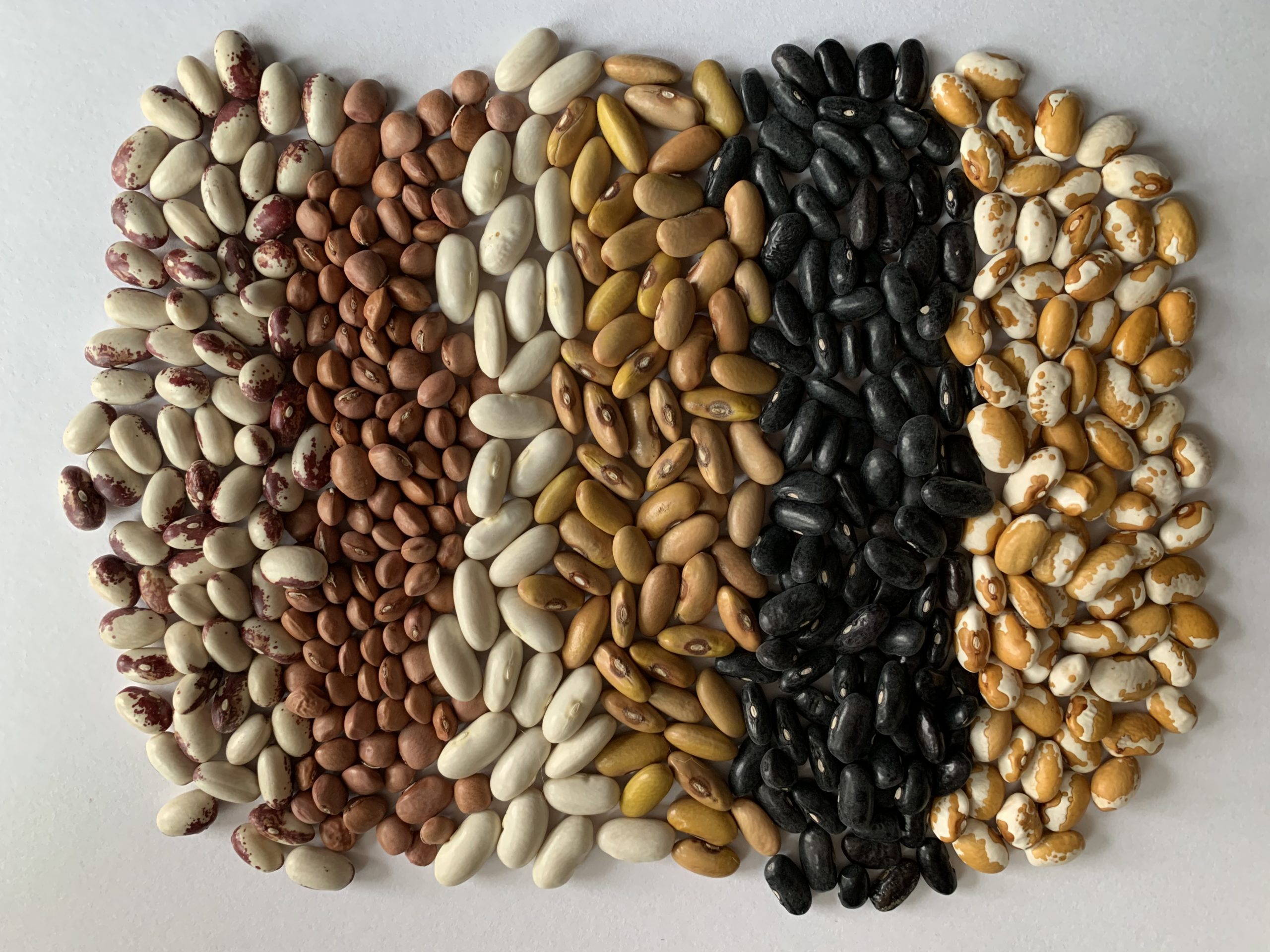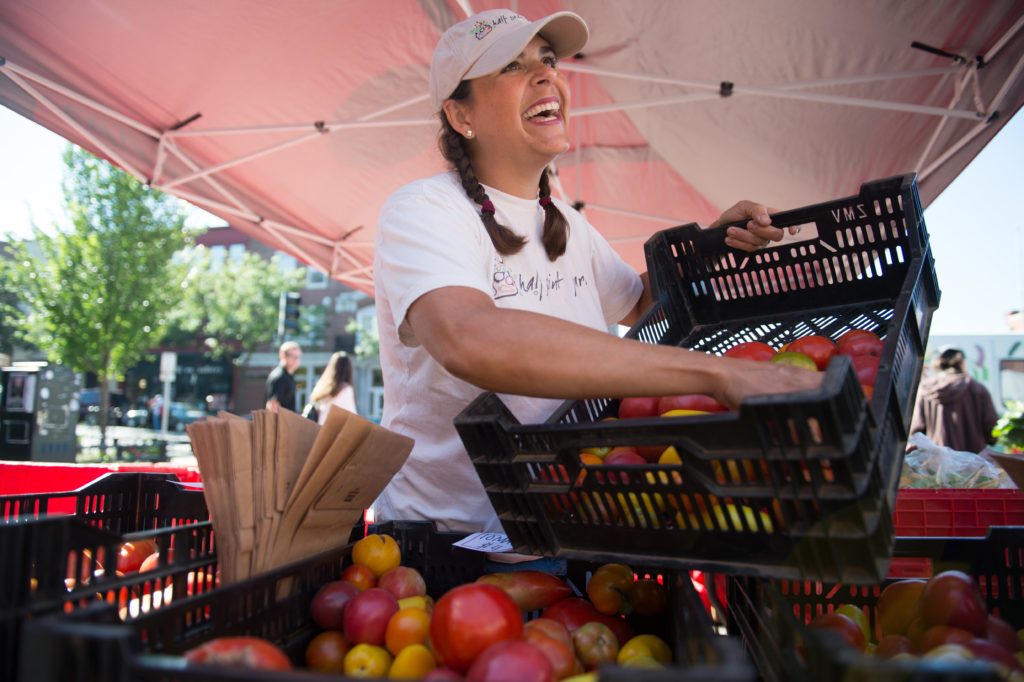
Deep in the freeze-thaw cycle of midwinter here in the Northeast, I find myself pulled between enjoying those surprising days when the sun actually feels warm again and those bitter windswept ones that chase me back indoors. This indecisive weather never fails to get me in the garden planning mood, and the return to longer days shifts my focus in earnest to garden dreaming.
 Garden planning for me always starts with a very simple question: What do I want to eat this year? This simple question almost immediately gets derailed once I realize that I really just want to eat everything. Tomatoes? Of course. Peppers? How many can I pack in? Eggplant? Maybe one this year. Potatoes? Do I have enough room? But when it comes to the question of beans the answer is always: How many varieties should I choose?
Garden planning for me always starts with a very simple question: What do I want to eat this year? This simple question almost immediately gets derailed once I realize that I really just want to eat everything. Tomatoes? Of course. Peppers? How many can I pack in? Eggplant? Maybe one this year. Potatoes? Do I have enough room? But when it comes to the question of beans the answer is always: How many varieties should I choose?
The dizzying diversity of the legume family is inspiring with so many shapes and colors and mottled patterns. The different kinds of growth habits means there’s a bean for nearly any growing situation. According to the FAO, beans are high in fiber, protein, nutrients and vitamins, making them nutritional powerhouses that can be eaten at any stage of growth; combining them with foods like grains only increases their nutritional value. They are a crop that doesn’t deplete but instead enriches the soil using their gift of nitrogen fixation. In fact, you can literally witness this by digging around the roots of a flowering bean plant to uncover little pinkish-colored nodules on the roots. That’s where the magic is happening — if you’ve got nodules, the beans are actively fixing nitrogen from the air right into the soil, making it available to future crops even that very season. I always follow a crop of beans with a nitrogen-loving crop like lettuce to take advantage of the free fertilizer the beans generously provide.
Beans are also powerful allies in the fight against climate change, being adaptive to most environments and extremely water efficient. Many beans are good candidates for dry farming in regions that are arid or becoming more so. When you grow beans you are not just creating a haven of biodiversity, but also a reliable food source and planet-sustaining partner. Becky Webster, an Oneida seed keeper, farmer and professor, said on a recent episode of the Spirit Plate podcast, “I really do like the beans the best. I think they are the most generous and most forgiving of the three sisters.” I agree. The humble legume has a home in every garden, and I hope this year in yours as well.
 When I was farming professionally, I also chose the crops we would offer based on that simple question but with a little more specificity: What flavors did I want to share? My little farm at the peak of summer was filled with vegetal perfumes, vibrant colors, a myriad of leafy textures and was accompanied by the buzzing symphony of insect song and the sound of munching. I felt like just another creature on my farm, embodying that little Slow Food snail, munching my way through each day, tasting my environment. Snacking, yes, but also monitoring for ripeness, sweetness and maturity. This would be the signal to alert my crew to harvest a certain crop and also to start letting my chefs know something special was on the horizon for their menus. Delicious beans were always on my munching tours around the farm. You can eat beans all season long at all stages of maturity: snappy, sweet green beans perfect for blanching and sautéing with some fresh garlic for a side dish; slightly starchy but meaty shell beans ready to be boiled and added to a salad; when the first dry beans were dry enough to rattle in their pods, I’d gradually harvest handfuls for the season’s first dreamy pot of beans. I really love having loose beans in my pockets, rattling around like coins and ending up in colorful piles on my dresser at night. I have always felt that having jars of beans in my pantry is a kind of insurance policy — good gardens and good meals are practically guaranteed if I have dreamed ahead to save and store beans for the future.
When I was farming professionally, I also chose the crops we would offer based on that simple question but with a little more specificity: What flavors did I want to share? My little farm at the peak of summer was filled with vegetal perfumes, vibrant colors, a myriad of leafy textures and was accompanied by the buzzing symphony of insect song and the sound of munching. I felt like just another creature on my farm, embodying that little Slow Food snail, munching my way through each day, tasting my environment. Snacking, yes, but also monitoring for ripeness, sweetness and maturity. This would be the signal to alert my crew to harvest a certain crop and also to start letting my chefs know something special was on the horizon for their menus. Delicious beans were always on my munching tours around the farm. You can eat beans all season long at all stages of maturity: snappy, sweet green beans perfect for blanching and sautéing with some fresh garlic for a side dish; slightly starchy but meaty shell beans ready to be boiled and added to a salad; when the first dry beans were dry enough to rattle in their pods, I’d gradually harvest handfuls for the season’s first dreamy pot of beans. I really love having loose beans in my pockets, rattling around like coins and ending up in colorful piles on my dresser at night. I have always felt that having jars of beans in my pantry is a kind of insurance policy — good gardens and good meals are practically guaranteed if I have dreamed ahead to save and store beans for the future.
 This is what Slow Food USA hopes to bring to you with this year’s Plant A Seed kit: your own bean dreams woven with a curated selection of six regional Ark of Taste varieties, each with their own shapes, colors, growing habits and stories. I hope you try your hand at not just growing, planting, cooking and eating these great beans, but also saving and sharing them. In addition to the seeds, the kit includes seed-saving envelopes, a comic and a bean zine chock full of bean stats, stories, recipes and resources for seed saving and connecting with a seed library in your area (or even starting one)! Bean seeds come with stories, as they have always traveled with people through migrations, forced relocations and other journeys. Learning their stories creates a deeper relationship with these sisters, our more-than-human relations. I hope you are inspired to grow some or all of these beans yourself or share them with your community or school garden. I will be growing them right alongside you and sharing my garden pics, growing tips and recipes all year long — and I hope to have some bean suppers with you in your region later this year! Purchase a seed kit HERE and remember to use the hashtags #slowbeans, #lovepulses and #plantaseed2022 when posting your bean pics, recipes and garden plans this year. Happy garden dreaming!
This is what Slow Food USA hopes to bring to you with this year’s Plant A Seed kit: your own bean dreams woven with a curated selection of six regional Ark of Taste varieties, each with their own shapes, colors, growing habits and stories. I hope you try your hand at not just growing, planting, cooking and eating these great beans, but also saving and sharing them. In addition to the seeds, the kit includes seed-saving envelopes, a comic and a bean zine chock full of bean stats, stories, recipes and resources for seed saving and connecting with a seed library in your area (or even starting one)! Bean seeds come with stories, as they have always traveled with people through migrations, forced relocations and other journeys. Learning their stories creates a deeper relationship with these sisters, our more-than-human relations. I hope you are inspired to grow some or all of these beans yourself or share them with your community or school garden. I will be growing them right alongside you and sharing my garden pics, growing tips and recipes all year long — and I hope to have some bean suppers with you in your region later this year! Purchase a seed kit HERE and remember to use the hashtags #slowbeans, #lovepulses and #plantaseed2022 when posting your bean pics, recipes and garden plans this year. Happy garden dreaming!
Photo Credits | Mara Welton and Daria Bishop


Looks good. Thanks for sharing with us. keep posting.